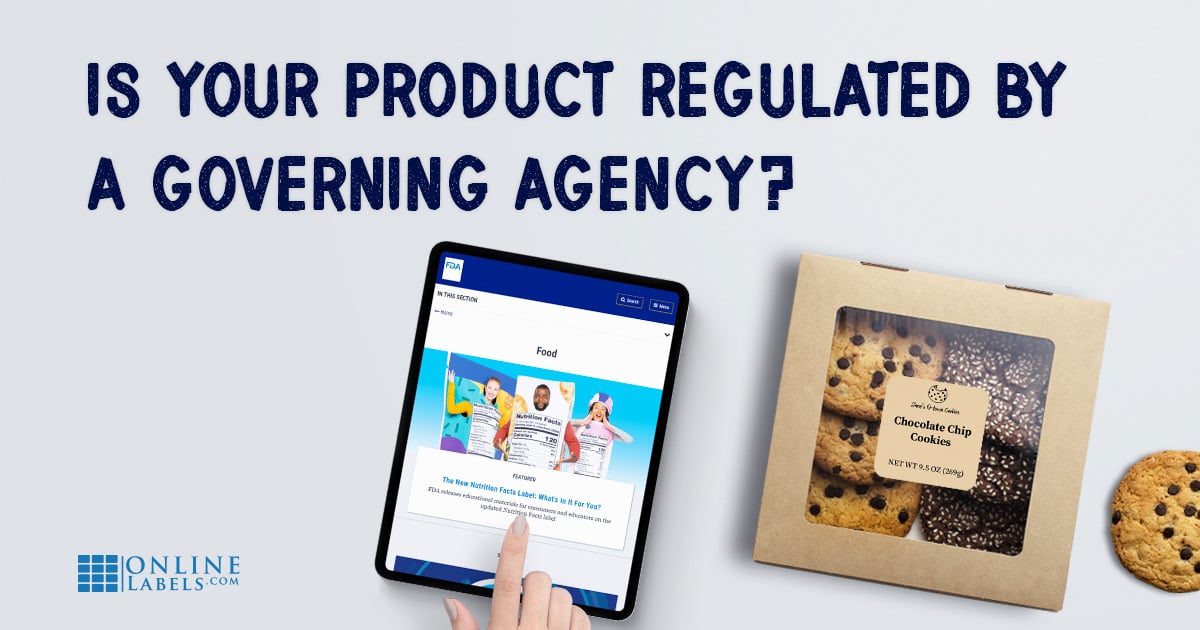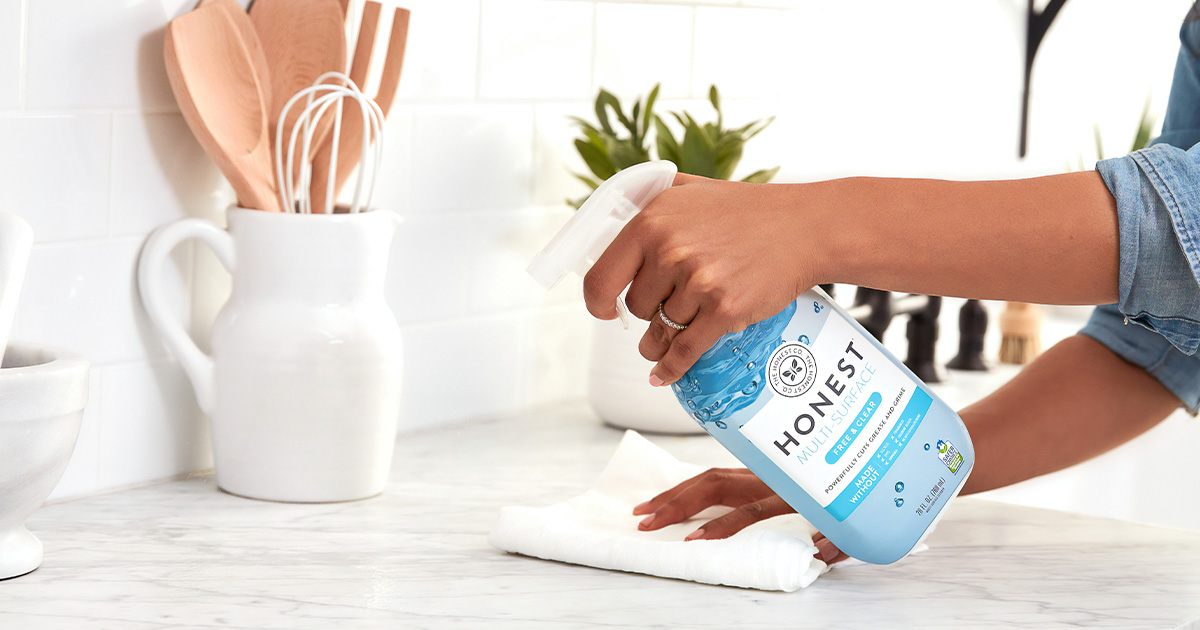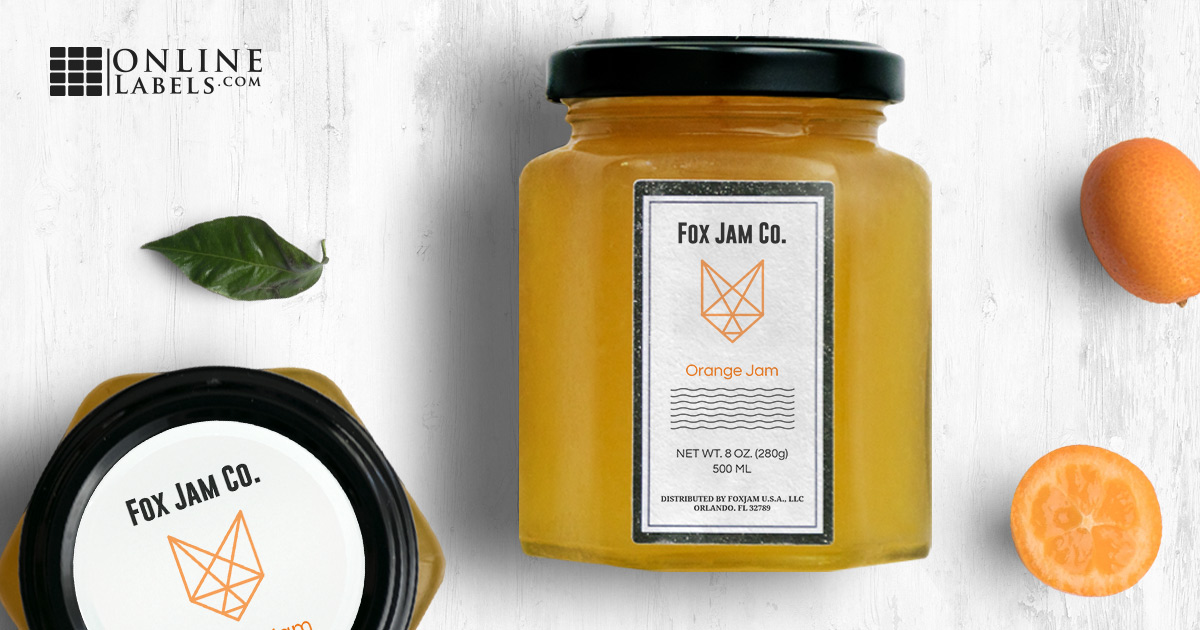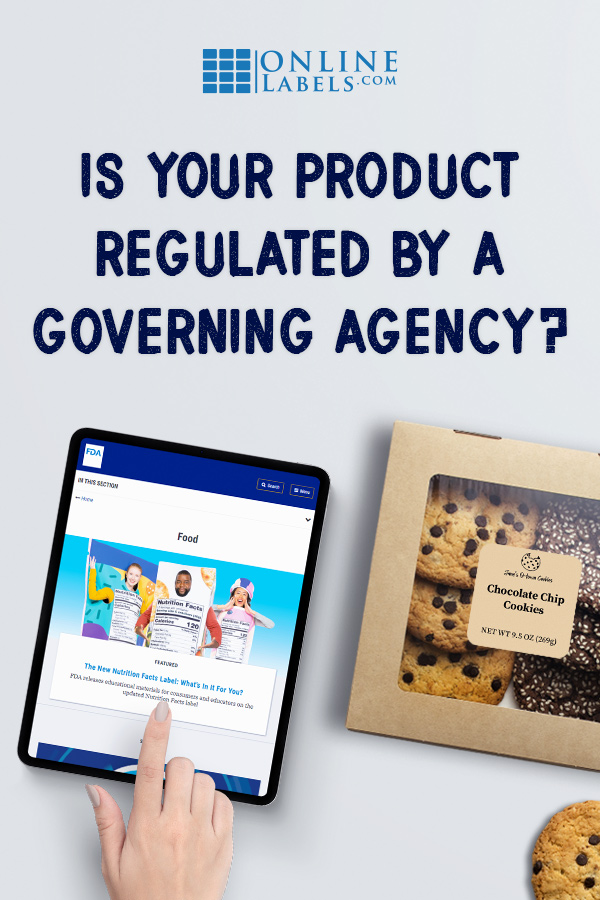What Governing Body Regulates My Product?

To keep consumers safe, there are numerous governing bodies in place in the United States. If you're selling handmade or manufactured products to US citizens, it's important to be well-versed in the governing bodies and their regulations.
Below, we break down which agency regulates which products and what labeling rules they put in place that you need to follow.
What's required to be on my labels to sell products in the United States?

Depending on what you sell, there can be many regulations your product labels must comply with. A product could have to be compliant with several labeling regulations from different agencies.
If your products are sold in "package form" by weight, measure, or count, it must comply with The Fair Packaging and Labeling Act (FPLA) and Uniform Packaging and Labeling Regulation (UPLR), NIST Handbook 130-Current Edition.
Additionally, all products imported into the U.S. must conform to Title 19, United States Code, Chapter 4, Section 1304 as well as 19 CFR 134, Country of Origin Marking regulations.
Other product categories (such as electronics, food, medical devices, etc.), are covered by additional agency regulations – which we dive into later in this article.
The Fair Packaging and Labeling Act (FPLA)
The FPLA applies specifically to commodities (any article, product, or good for sale to individuals). However, that excludes food, meat, poultry, tobacco, drug, medical devices, and cosmetics.
What FPLA dictates is the amount of information you must include on your packages, if they're sold on the basis of weight or measure. Items like electronics or industrial equipment that are sold by the number of their contents don't apply.
To be compliant, products must be labeled with:
- Declaration of identity
- Declaration of responsibility (name and address of manufacturer, packer, or distributor)
- Declaration of net quantity, servings, or uses
- Metric units (SI)
Uniform Packaging and Labeling Regulation (UPLR) and NIST Handbook 130
The UPLR exists to help consumers make informed purchasing decisions. Its requirements focus on product details and quantities that are necessary when comparing prices and evaluating similar products.
The UPLR requires that consumer packaging display a label specifying:
- Identity of the commodity
- Name and place of business of the manufacturer, packer, or distributor
- Net quantity of contents in terms of weight, mass measure, or numerical count
- Metric units (SI) (except for non-consumer products that aren't additionally covered by FPLA which can be in U.S metrics)
There are instances when a product may be exempt from following the rules outlined in UPLR, but all 50 states employ similar packaging and labeling regulations. Thus, even if a product is exempt under UPLR, the requirements of the state law can still be applied.
What "country of origin" markings are required for imported goods?
Title 19, United States Code, Chapter 4, Section 1304 and 19 CFR 134, Country of Origin Marking regulations require that every item of foreign origin (or its container) imported into the U.S. be marked in a distinct place. The U.S. purchaser must be able to read the name of the country of origin in English as well as the time and date of being imported.
For information on these label and marking requirements, see Custom and Border Protection's Terminology and Methods for Marking of Country of Origin on U.S. Imports.
What other product markings should I know about?

There are several agencies in place to regulate specific products, and thus impart their own labeling or marking requirements. There may also be state-specific requirements or multiple requirements.
For example, if your products are sold by weight, measure, or count, they are subject to state weights and measures control as well as FPLA requirements.
The list below will help you identify what agency governs your products. Please note that it includes a variety of products and agencies but is not all-inclusive.
| Product | Governing Agency | Agency Acronym |
|---|---|---|
| All – product claims (marketing, environmental) | Federal Trade Commission | FTC |
| Automobile parts | Department of Transportation | DOT |
| Batteries containing cadmium and/or lead electrodes | Environmental Protection Agency | EPA |
| Carpet and Rugs (flammability) | Consumer Product Safety Commission | CPSC |
| Certain appliances (covered under energy efficiency and EnergyGuide Standards) | Department of Energy / Federal Trade Commission | DOE / FTC |
| Chemical substances and mixtures (besides food, drugs, cosmetics) | Environmental Protection Agency | EPA |
| Children's sleepwear | Consumer Product Safety Commission | CPSC |
| Cosmetics | Food & Drug Administration | FDA |
| Food (except meat, poultry and processed eggs) and Food Contact | Food & Drug Administration | FDA |
| Food (meat, poultry, and processed eggs) | United States Department of Agriculture | USDA |
| Hazardous household substances | Consumer Product Safety Commission | CPSC |
| Jewelry | Federal Trade Commission | FTC |
| Mattresses | Consumer Product Safety Commission | CPSC |
| Medical devices | Food & Drug Administration | FDA |
| Organic products, including fibers | United States Department of Agriculture | USDA |
| Pesticides | Environmental Protection Agency | EPA |
| Portable generators | Consumer Product Safety Commission | CPSC |
| Products used in the workplace | Occupational Safety and Health Administration | OSHA |
| Radio frequency devices | Federal Trade Commission | FTC |
| Textiles, fur, wool, footwear | Federal Trade Commission | FTC |
| Tobacco, beer, and distilled spirits | Department of Treasury | USDT |
| Toys, children's products, juvenile products | Consumer Product Safety Commission | CPSC |
| Walk-behind mowers | Consumer Product Safety Commission | CPSC |
Running a business can be difficult, but you don't have to go it alone. We hope this guide helps you comply with federal and state laws so your business can grow and thrive.
For additional support, be sure to check out our article on shipping perishable products or find out if the FDA regulates your cosmetic/bath and body products.
This article is meant to be used as a labeling guide, not as an authoritative resource on the latest packaging and compliance legislation. At the time of publication (February 2020), the information mentioned above is compliant with state and federal laws. Please be sure to check government databases for updates or revisions as regulations can change frequently. We are not responsible or liable for any actions taken as a result of using the content or resources listed above.




